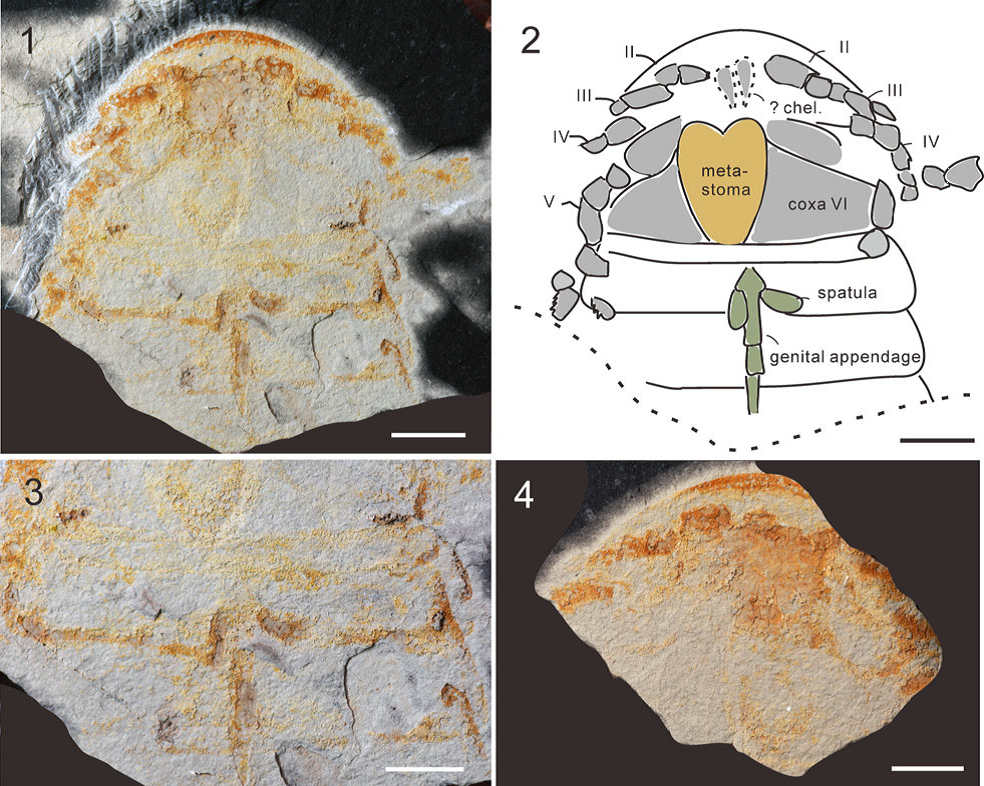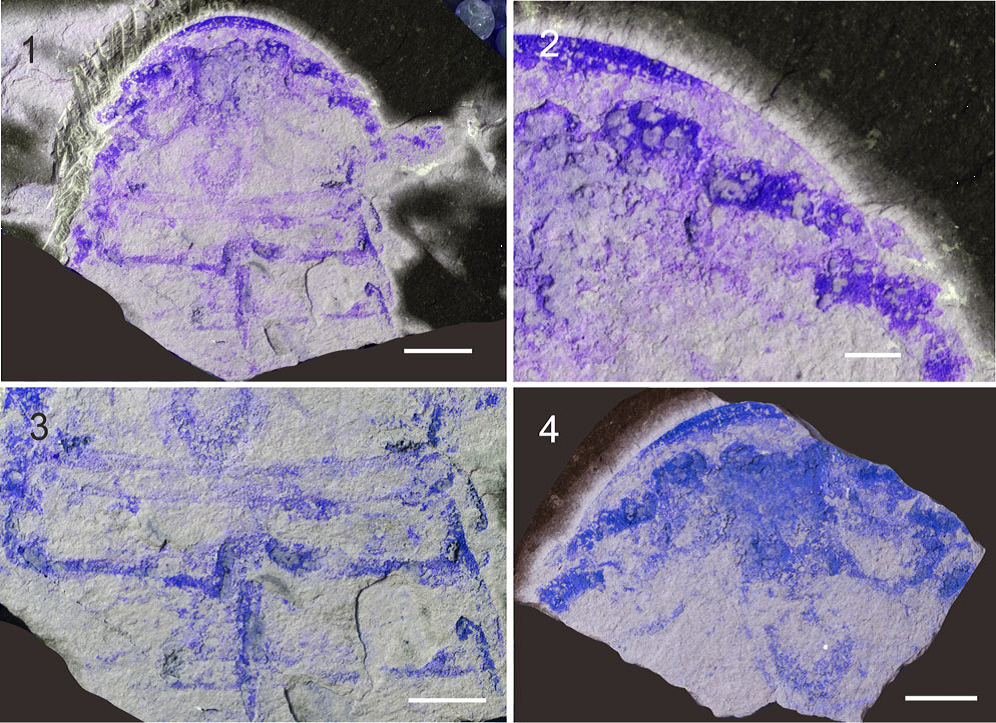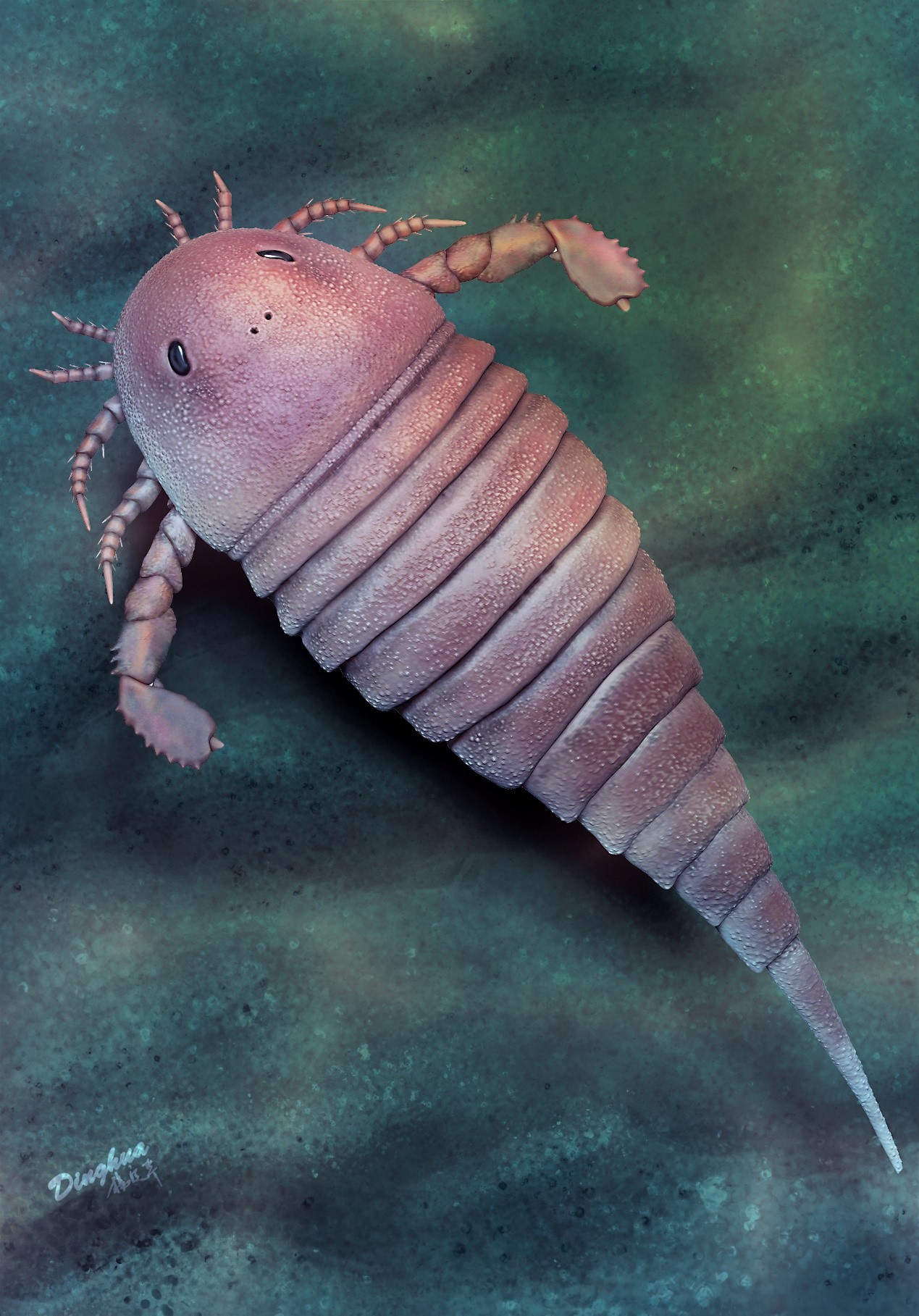Eurypterids (Arthropoda: Chelicerata), normally known as sea scorpions, are an important extinct group of Paleozoic chelicerate arthropods. Recently, researchers from China and England described a new Ordovician eurypterid, Archopterus anjiensis n. gen. n. sp., from the latest Ordovician (Hirnantian) Anji Biota of Zhejiang Province, South China. It represents the first unequivocal Ordovician and the oldest eurypterid recorded in China, adding new knowledge to early evolution of eurypterids in Gondwana.
The study was published in Journal of Paleontology in May.
Eurypterids first appeared in the Ordovician, attained their maximum diversity during the late Silurian and early Devonian, and became extinct at the end of Permian. Bearing bizarre morphology and high ecological diversity, they occupied marine, freshwater, and even terrestrial environments, becoming an important medium for us to understand the transition of ecological environments in the Paleozoic, and have always attracted attentions of both researchers and the public. However, Ordovician eurypterids are extremely rare, to date, only 12 species of Ordovician eurypterids are known in the world, so any reported occurrence is of great significance to understanding their early evolutionary history.
A joint working group of Prof. ZHANG Haichun, WANG Bo, ZHANG Yuandong, and PhD student WANG Han from Nanjing Institute of Geology and Palaeontology, Chinese Academy of Sciences (NIGPAS) reported a rare Ordovician eurypterid from the Wenchang Formation of Anji County, Zhejiang Province.
“Archopterus anjiensis is characterized by a parabolic carapace, Hughmilleria-type prosomal appendages, vase-shaped metastoma, and three-segmented type A (female) genital appendage, estimated to have been 15 cm long.”, WANG Han says. Associated with diverse sponges, Archopterus anjiensis was found in a deep-water environment of several hundred meters deep. This occurrence, along with some Ordovician eurypterids from a normal marine environment, may indicate that some early eurypterids favored a relatively deeper-water environment than their post-Ordovician relatives.
In addition, Archopterus anjiensis represents the oldest adelophthalmid and extends the stratigraphic range of this family to Late Ordovician (by about ten million years), making Adelophthalmidae the longest-living eurypterid family (Ordovician to Permian), and indicates that adelophthalmids have been found in the widest range of habitats of all eurypterid groups.
This rare Ordovician sea scorpion from Zhejiang Province, along with continuous discoveries of eurypterid fossils in China indicates that there is a great potential for exploration in Paleozoic Gondwana areas. The emergence of new materials and progress of paleontological research methods will provide the basis for further comprehensive studies of Chinese eurypterids.
This research was supported by the Chinese Academy of Sciences and the National Natural Science Foundation of China. Restoration artist YANG Dinghua (NIGPAS) made the life reconstruction.
Reference: Wang, H., Braddy, S., Botting, J., & Zhang, Y. D. (2023). The first documentation of an Ordovician eurypterid (Chelicerata) from China. Journal of Paleontology, 1-6. https://doi.org/10.1017/jpa.2023.21.


Fig.1 Fossils of Archopterus anjiensis.

Fig.2 Life reconstruction of Archopterus anjiensis (Drawn by YANG Dinghua)
Contact:
LIU Yun, Propagandist
Email: yunliu@nigpas.ac.cn
Nanjing Institute of Geology and Palaeontology, Chinese Academy of Sciences
Nanjing, Jiangsu 210008, China
Download:
